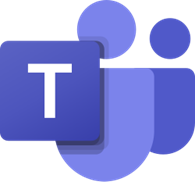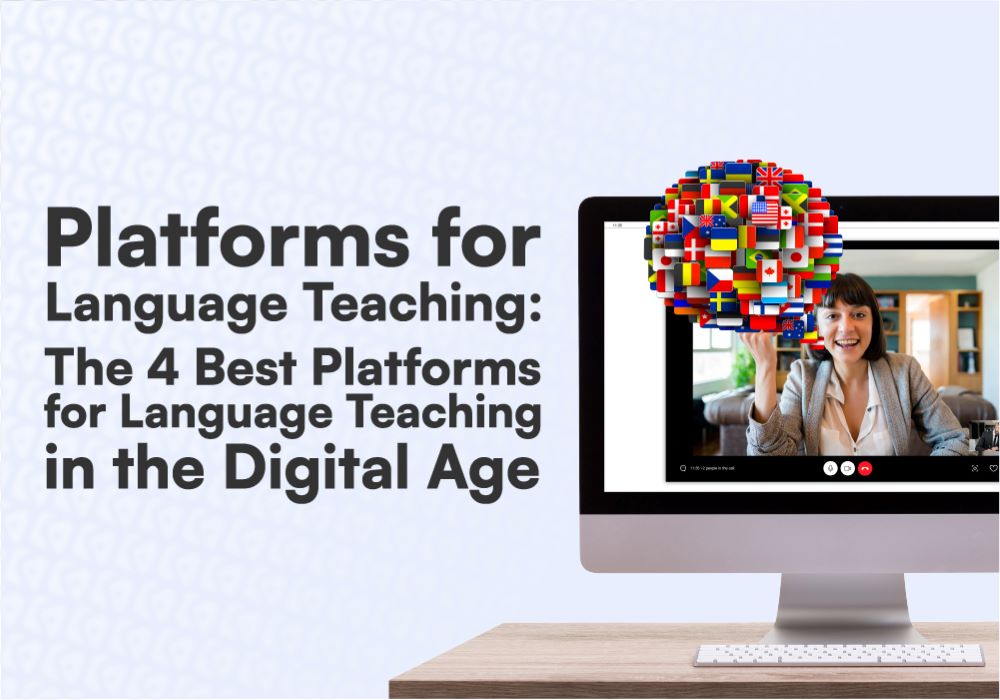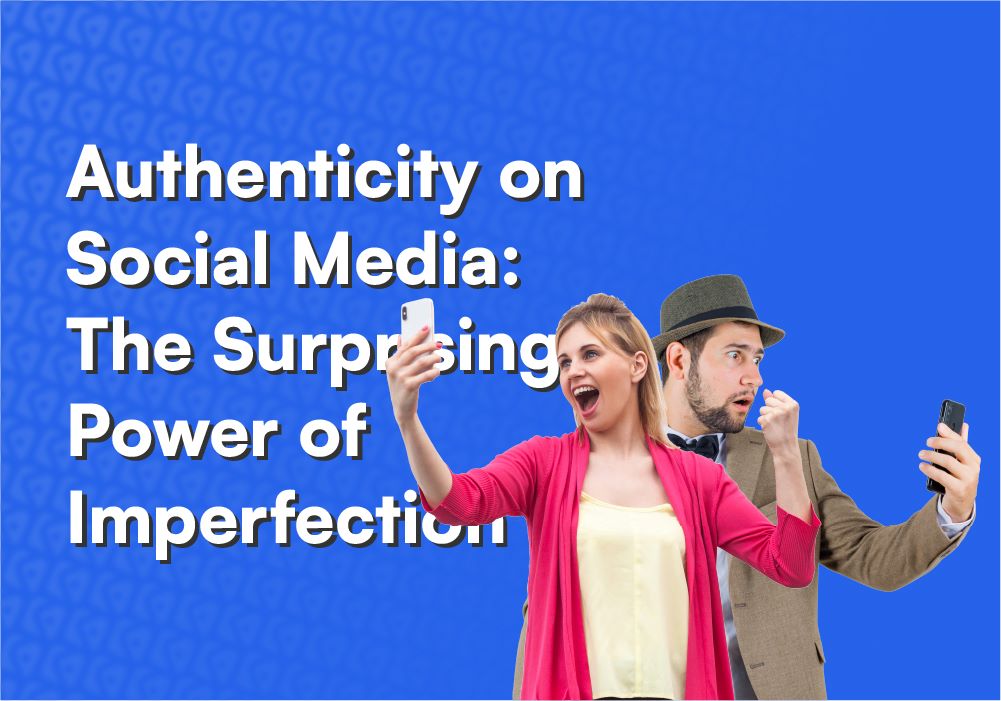Terminología para ayudarte a elegir las mejores plataformas para la enseñanza de idiomas
Entender la terminología detrás de los enfoques de aprendizaje digital es fundamental al evaluar plataformas para la enseñanza de idiomas. Conocer la diferencia entre formatos como e-learning, aprendizaje híbrido o instrucción guiada puede ayudar a los profesores a escoger las herramientas que realmente se ajusten a los objetivos de su curso.
E-LearningEl aprendizaje en línea (abreviatura de e-learning) abarca todas las formas de aprendizaje apoyadas por herramientas electrónicas, técnicas o digitales. Más específicamente, se refiere al uso de recursos digitales para apoyar los procesos de enseñanza y aprendizaje. Los métodos de e-learning están integrados en marcos didácticos y pedagógicos, por ejemplo, en cursos o seminarios tradicionales que incorporan medios digitales.
Al usar E-Learning en la enseñanza de idiomas, elegir las mejores plataformas para enseñar idiomas es fundamental para garantizar la interactividad, accesibilidad y calidad educativa.
Aprendizaje autodirigido: Esto ocurre fuera de la instrucción formal y sin la guía de un profesor. Los aprendices pueden adquirir conocimientos o habilidades sin querer mientras interactúan con contenido que les resulta relevante. En esos casos, el por qué y el cómo suelen ser secundarios.
Aprendizaje informal: El aprendizaje informal ocurre en situaciones autoorganizadas que surgen de problemas específicos o preguntas personales. Sucede sin la intervención de sistemas educativos institucionalizados y muchas veces no es reconocido como una experiencia de aprendizaje formal por el propio estudiante.
Aprendizaje basado en juegos: El conocimiento se adquiere dentro de un escenario estructurado guiado por las reglas y objetivos del juego. En el aprendizaje basado en juegos, el objetivo es lograr el éxito dentro del juego, y el aprendizaje sucede en el camino, a menudo sin que el jugador lo perciba como una tarea formal. Los estudiantes suelen encontrar este enfoque más atractivo y menos exigente. Las habilidades adquiridas pueden variar de una persona a otra, pero el proceso de aprendizaje en sí es fundamentalmente similar a los métodos no basados en juegos.
Aprendizaje móvil: Las herramientas digitales amplían el aula y abren nuevas oportunidades de aprendizaje. Gracias a los dispositivos móviles, los estudiantes pueden estudiar en cualquier momento y lugar, haciendo que el proceso sea más flexible en cuanto a tiempo y ubicación. El aprendizaje móvil no solo incluye elementos gamificados, sino también contenido entregado a través de smartphones o tablets, ya sea impulsado por curiosidad personal (por ejemplo, aprender a cambiar una llanta) o tareas formales (por ejemplo, asignaciones en una plataforma de aprendizaje).
Aprendizaje guiado: Esto tiene lugar dentro de una institución formal y cuenta con el apoyo de un instructor, con objetivos de aprendizaje claramente definidos. El aprendizaje guiado puede ocurrir en persona, en un formato de aprendizaje combinado o completamente en línea.
Aprendizaje de idiomas híbrido: El aprendizaje híbrido en sí no prescribe un formato específico, sino que establece un marco que depende de la modalidad de entrega. Aquí es donde la elección de las plataformas para la enseñanza de idiomas se vuelve crucial: la plataforma seleccionada debe apoyar los objetivos, la estructura y el estilo de interacción del curso.
Aprendizaje combinado: El aprendizaje combinado combina instrucción en línea y presencial de una manera que complementa ambos entornos. Requiere una integración cuidadosa de herramientas y contenidos. Elegir plataformas adecuadas para la enseñanza de idiomas asegura que se cumplan los objetivos de aprendizaje en ambas fases, ya sea que los estudiantes estén en casa o en el aula.
Al implementar el aprendizaje combinado en la enseñanza de idiomas, elegir las plataformas adecuadas para la enseñanza ayuda a garantizar que los componentes en línea y fuera de línea funcionen de manera fluida juntos.
| Curso presencial | Curso presencial | Curso de Aprendizaje Combinado | Cursos en línea con tutoría |
| – sin internet en el aula – medios digitales usados fuera del aula | – uso de medios digitales en el aula y más allá – integración de elementos en línea con la enseñanza presencial | – contenido entregado en fases en línea – integración con la enseñanza presencial | – oportunidades de aprendizaje flexibles sin importar la ubicación – fases síncronas y asíncronas – aprendizaje individual o en grupo |
| El profesor enseña, da retroalimentación y ofrece orientación. | |||
La tabla presenta los diferentes formatos de enseñanza híbrida. Muestra claramente que el alcance y el tipo de uso de medios digitales dependen de la infraestructura técnica disponible y del grupo objetivo. Sin duda, las competencias mediáticas del docente—tanto técnicas como didáctico-metodológicas—juegan un papel crucial.
Explora nuestras plataformas recomendadas para la enseñanza de idiomas y encuentra la mejor opción para tu configuración de aula.
Si eres profesor de idiomas, ya sea trabajando en un instituto o como freelancer, es importante saber que la IA puede ayudar a tus estudiantes a mejorar sus habilidades lingüísticas. Por eso, vale la pena recomendarles algunas apps de aprendizaje de idiomas con IA. Aprende más aquí: IA para aprender idiomas.
Las plataformas más usadas para enseñar idiomas
Con tantas opciones digitales disponibles, elegir la herramienta adecuada puede parecer abrumador. En esta sección, exploramos algunas de las plataformas más utilizadas para la enseñanza de idiomas. Estas plataformas no solo son populares, sino también pedagógicamente efectivas, apoyando una enseñanza interactiva, estructurada y centrada en el estudiante.

Zoom
Entre las plataformas más elegidas para la enseñanza de idiomas, Zoom destaca por su sencillez y potencial interactivo. Desde salas de grupos pequeños hasta pizarras compartidas, Zoom ayuda a crear aulas virtuales dinámicas adaptadas a la enseñanza moderna de idiomas:

- Salas de grupos
- Chat en la reunión
- Retroalimentación no verbal
- Encuestas
- Reacciones
- Compartir pantalla
- Compartiendo diapositivas como fondo virtual
- Fondos virtuales
- Pizarra
Microsoft Teams
Microsoft Teams también califica como un entorno confiable para la enseñanza de idiomas. Su integración con Microsoft 365 lo convierte en una de las plataformas más completas para la enseñanza de idiomas, ideal para escuelas e instituciones que ya usan herramientas de Microsoft.

- Charlar
- Equipos
- Reuniones
- Notas
- Archivos adjuntos
- Canales
- Conversaciones en grupo
- Reemplazo del sistema telefónico
- Sala de reuniones
- Integraciones
Adobe Connect
Adobe Connect es preferido por educadores con experiencia que buscan más control y personalización. Como una de las plataformas más flexibles para la enseñanza de idiomas, permite a los instructores diseñar entornos virtuales detallados con rutas de aprendizaje claras.

Características:
- Salas de reuniones ilimitadas y personalizables
- Varias habitaciones por usuario
- Sesiones de trabajo en las reuniones
- VoIP
- Conferencias de audio y video
- Grabaciones de reuniones
- Compartir pantalla
- Notas, chat y pizarras
- Gestión de usuarios, administración e informes
- Encuestas
- Biblioteca central de contenido
- SDK de Constructor de Colaboraciones
- Aplicación móvil (Android & iOS)
- clientes HTML5
BigBlueButton
BigBlueButton fue desarrollado en 2007 por el programa de Gestión de Innovación Tecnológica (TIM) en el Instituto de Emprendimiento y Comercialización Tecnológica de la Universidad Carleton en Ottawa, Canadá. Los profesores valoran su interfaz intuitiva y sus funciones prácticas que ayudan a mantener a los estudiantes interesados durante toda la lección.
Especialmente en contextos académicos y de código abierto, BigBlueButton ha surgido como una opción fácil de usar pero potente. Su conjunto de funciones específicas lo hace un competidor destacado entre las plataformas para la enseñanza de idiomas, especialmente para quienes buscan una interfaz intuitiva y herramientas de colaboración sólidas.

- Compartir pantalla
- Pizarra blanca multiusuario
- Salas de grupos
- Encuestas simples en grupo
- Compartir documentos
- Opciones de video
- Charlar
- Encuestas
- Notas compartidas
Conclusión: Lo que los profesores de idiomas deberían tener en cuenta al elegir una plataforma
Audiencia, Tecnología y Didáctica en Armonía
Al elegir plataformas para la enseñanza de idiomas, es importante mirar más allá de las funciones y considerar los objetivos de tus estudiantes, su acceso digital y tu propio enfoque de enseñanza. ¿La plataforma fomenta la participación? ¿Es fácil de usar para tus alumnos? ¿Puede adaptarse a diferentes formatos de curso?
También es fundamental tener en cuenta el nivel de alfabetización digital de tus estudiantes, los dispositivos que usan y el tipo de entorno de aprendizaje que quieres crear—ya sea sincrónico, asincrónico o una mezcla de ambos.
Recomendaciones para principiantes y usuarios avanzados
Para los recién llegados, comenzar con plataformas fáciles de usar para enseñar idiomas como Zoom o Microsoft Teams puede ser una buena base. Los usuarios más avanzados quizás valoren la flexibilidad de Adobe Connect o BigBlueButton – plataformas que ofrecen mayor libertad para diseñar cursos a medida.
En última instancia, la mejor opción depende de qué tan bien una plataforma apoye tu estilo de enseñanza y las necesidades de tu aula. Al entender las plataformas disponibles para la enseñanza de idiomas, estarás mejor preparado para fomentar el éxito, la motivación y experiencias de aprendizaje significativas en el idioma.


